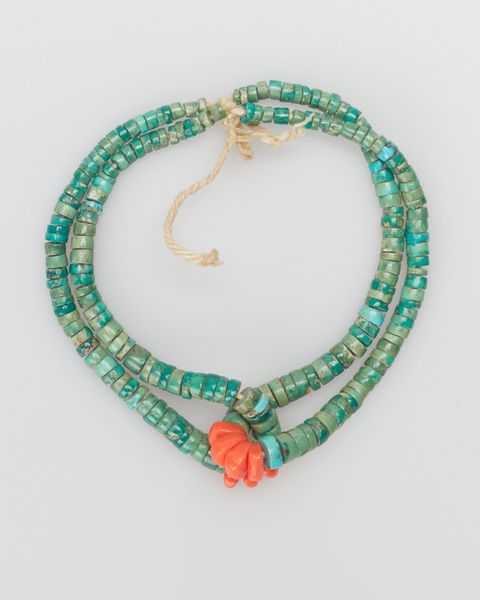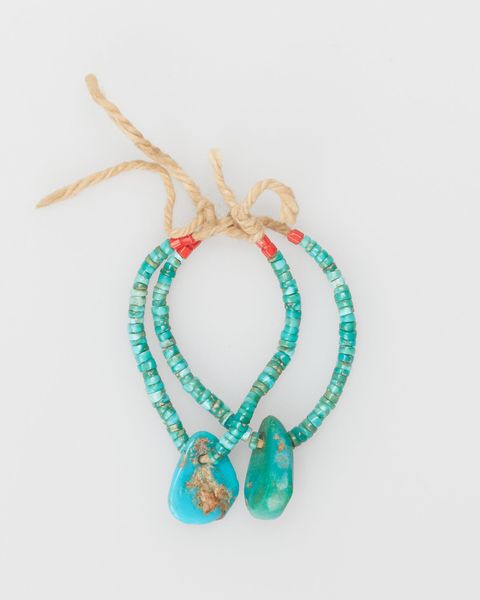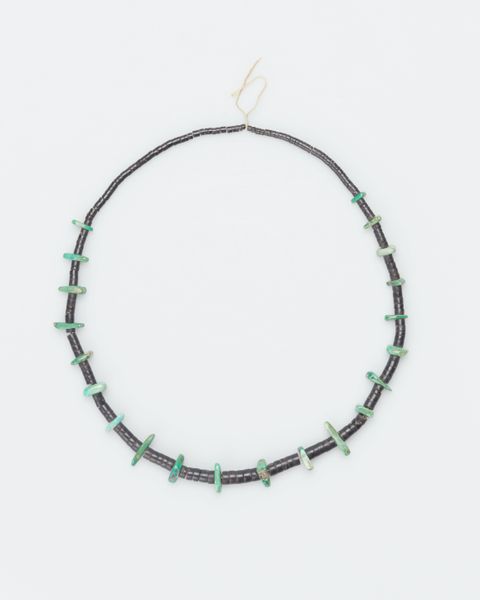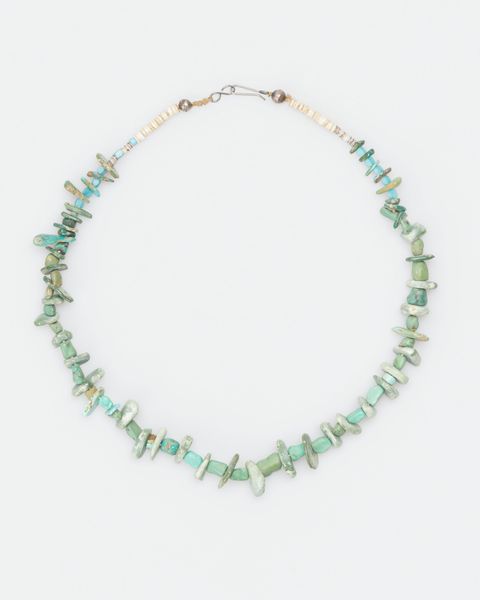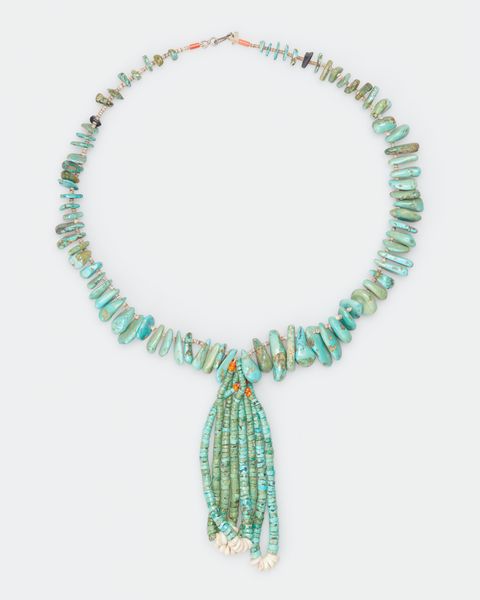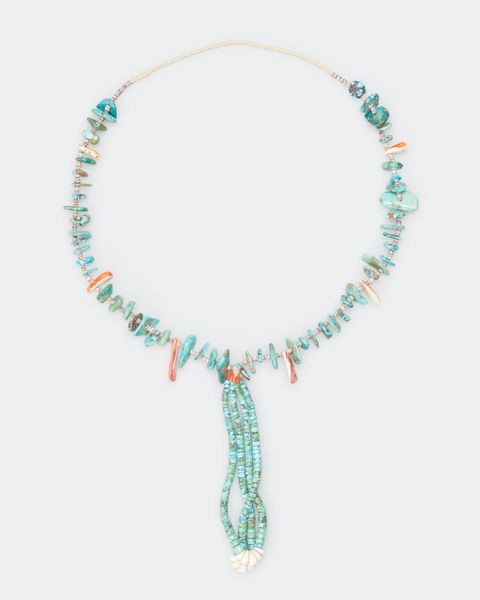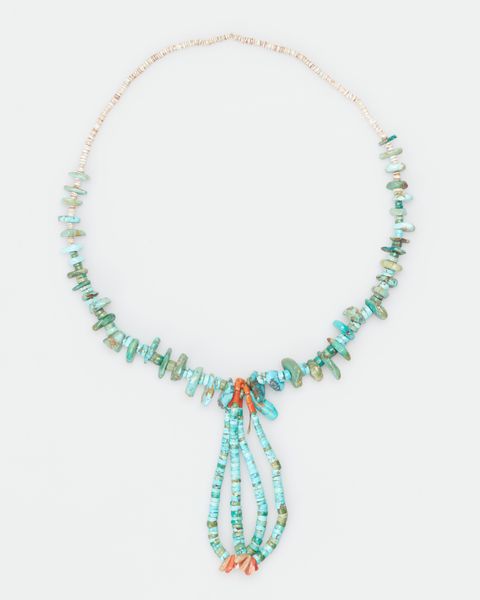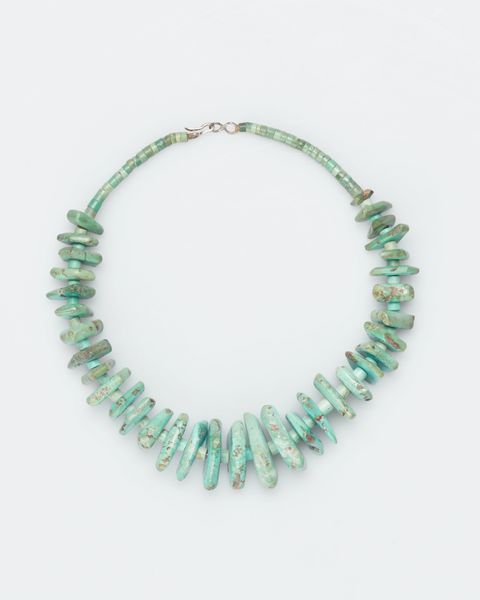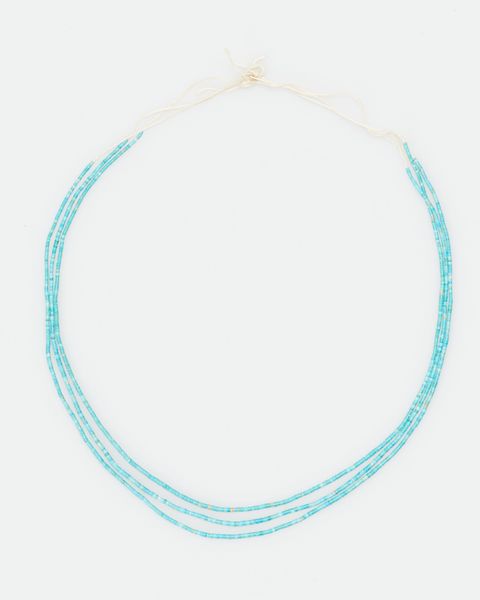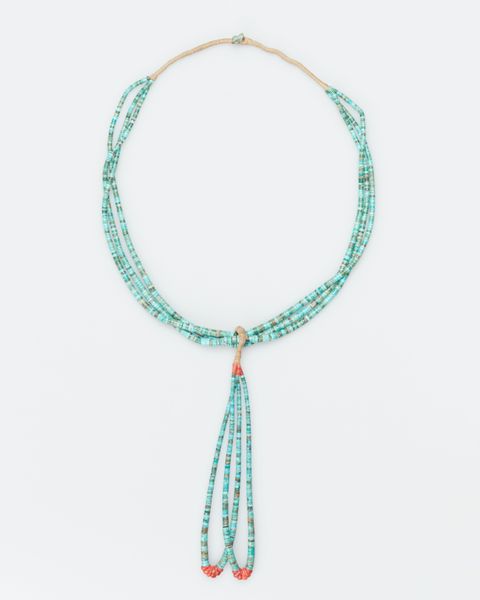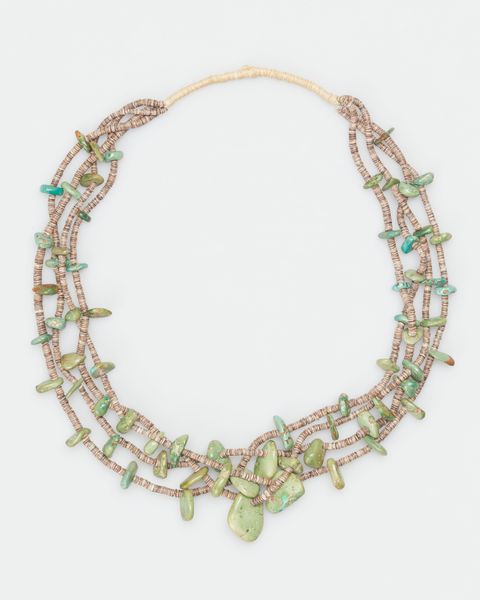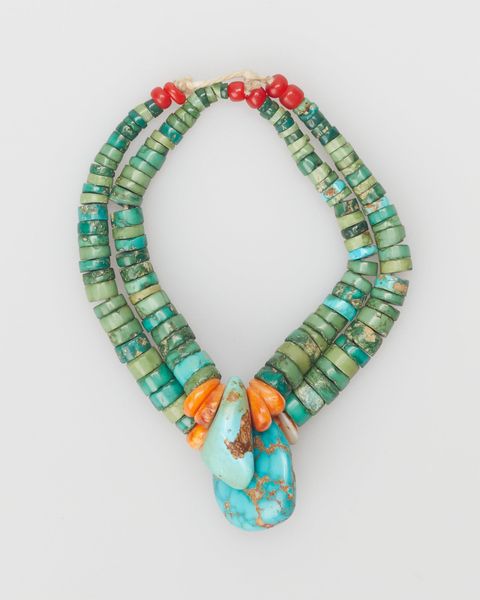
#
decorative-art
#
indigenous-americas
Copyright: Public Domain
Editor: We’re looking at Jacla, a mixed-media textile necklace from around the 20th century, currently held at the Minneapolis Institute of Art. The weathered green and turquoise beads create a sense of history. What do you see in this piece, especially considering its place within Indigenous American art? Curator: Well, from a historical perspective, a piece like this speaks volumes about cultural exchange and adaptation. Consider the materials— likely sourced from trade networks or specific geographical areas considered sacred. How does the presence of turquoise influence the status of its wearer? Editor: It makes me think of the importance of adornment within cultures, not just as decoration, but as markers of identity and social standing. Curator: Precisely. And remember, the context in which these objects are displayed dramatically affects our understanding. What stories are told about this piece when it’s placed within a museum setting, and how do those stories align with or diverge from the community it originated from? Also, what political power does the wearer possess when displaying this adornment? Editor: So, the museum becomes another layer in the history of this object. Curator: Absolutely. We must consider the politics of display, who is telling the story, and whose voice is amplified, as the answers can change our understanding of a piece. What might the creator of this work think of its life now, on display in a museum? Editor: It's fascinating to think about how an object carries meaning, both within its original context and in the context of a modern museum. Curator: It’s a constant negotiation. Examining Jacla through this lens highlights the importance of ethical representation and community collaboration. Museums have a responsibility. Editor: This makes me think about how objects carry both historical and social power. Curator: Precisely. The visual arts can reveal and question existing power structures within different groups and societies.
Comments
No comments
Be the first to comment and join the conversation on the ultimate creative platform.
